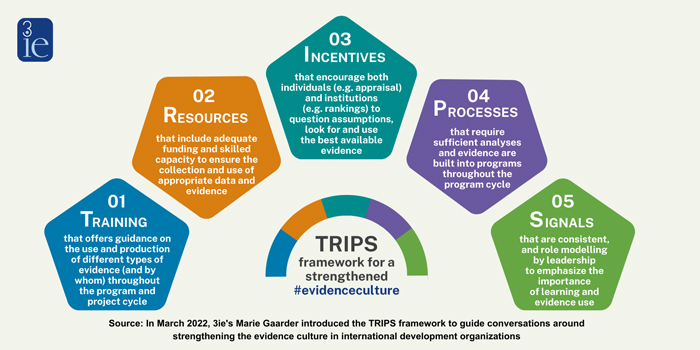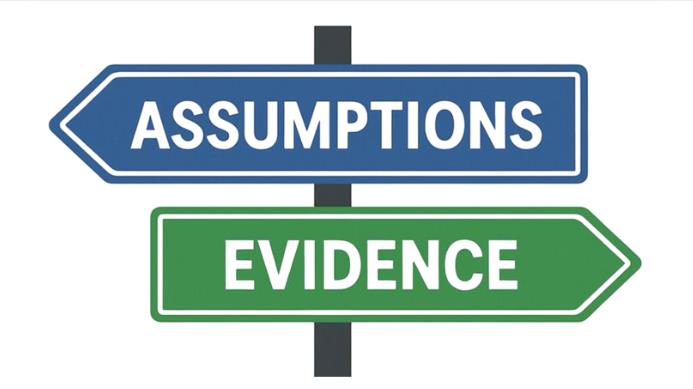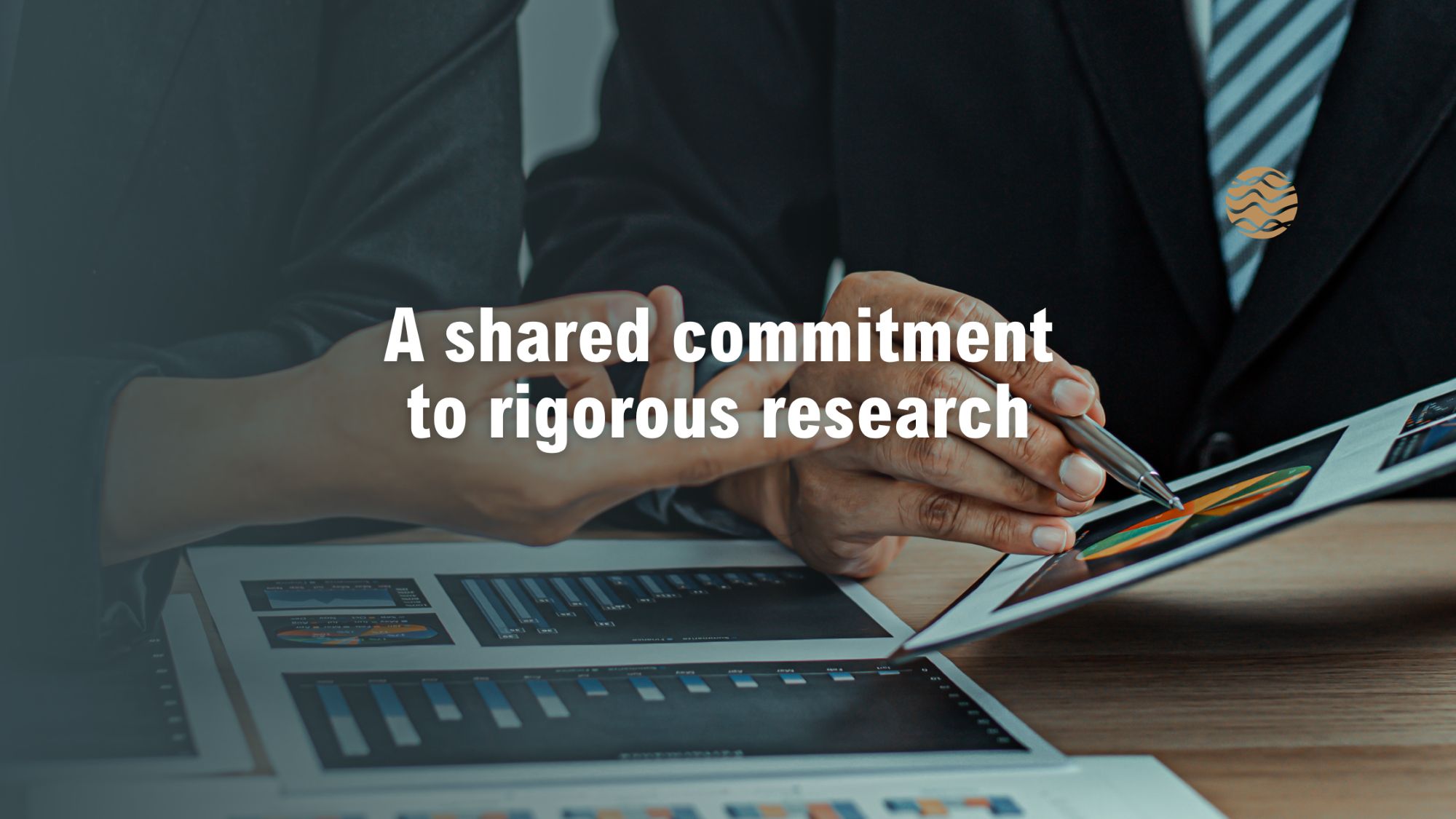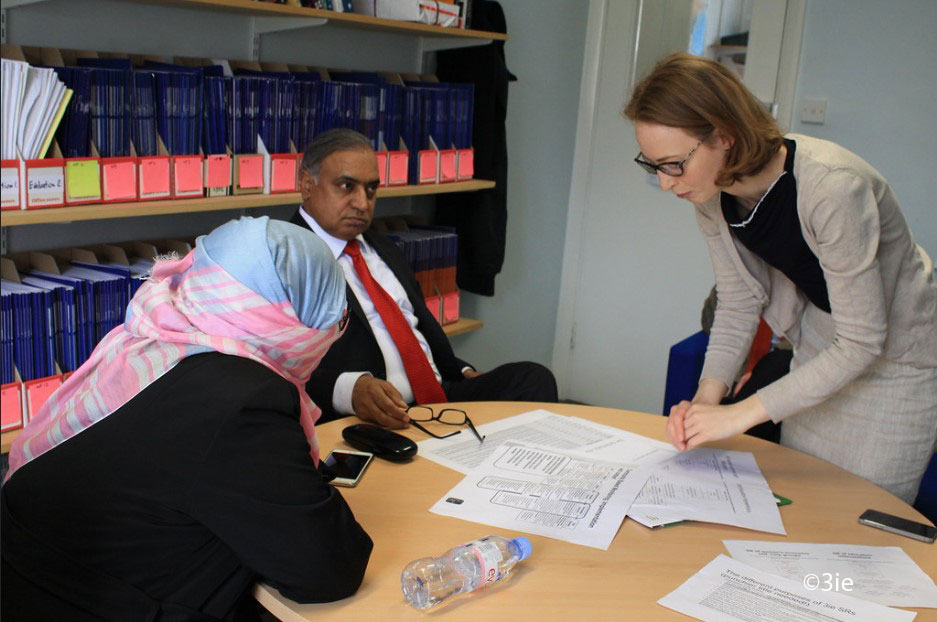The Global Evidence Commitment
Last week, during the high-profile IDB Knowledge Week, 3ie launched the Global Evidence Commitment, an opportunity for leading international development institutions – bilaterals, multilateral development banks, international NGOs, philanthropies – to come together to improve the culture and practice of evidence use in their institutions. The inaugural signatories, the Inter-American Development Bank, the Millennium Challenge Corporation, the Norwegian Agency for Development Cooperation (Norad), UK’s Foreign Commonwealth and Development Office (FCDO) and Germany’s KfW Development Bank (KFW) commit to mutual support and learning as they seek to advance the use of rigorous evidence to enhance the development- and cost-effectiveness of their programs. We at 3ie commit to facilitating this work.
Where we have come from; where we are going
When 3ie was founded 15 years ago, there was very little rigorous evidence of what worked in international development. The focus was mostly on monitoring disbursements and outputs. Thankfully, in the years since, the body of effectiveness studies has grown from very few to well over 12,000, and the range and quality of evidence-producing methods has expanded. There is much more access to rigorous evidence of what works, why and for whom than there once was.
However, despite this explosion in the availability of evidence, the actual use of the evidence continues to be a challenge. This past May, 3ie—along with the Center for Global Development (CGD)—convened a group in Washington to discuss how to improve development effectiveness by reinforcing a culture of evidence use. Our discussions were informed by key findings of a 2022 CGD report on New Evidence Tools for Policy Impact. The report identified the lack of institutional incentives as a key barrier to the use of appropriate evidence. It said, “Professional success is still too often measured by project approval and disbursements, as opposed to learning from, acting on, and sharing of evidence […] Even when evidence generation is prioritized, decision-makers may overlook the methods that are most appropriate and relevant to answering specific policy questions.”
To guide discussions around these findings and what to do about them, 3ie outlined the levers that institutions can use to improve the use of evidence. These are summarized as: training, resources, incentives, processes and signals from leaders—a framework we have named TRIPS.
The Global Evidence Commitment is the result of that May meeting and does two things. First, it brings together leading, peer organizations to learn from each other as they work to use the TRIPS levers to improve institutional evidence culture. Second, the commitment statement starts to address the problem of choosing the right type of evidence to answer questions that decision-makers face during each step of the programming and project cycle.
This push for addressing the institutional constraints to evidence use acknowledges that simply producing and making evidence available isn’t enough. Issues of timeliness, staff know-how, the additional hurdles task team leaders have to go through to obtain funding to finance adequate evidence collection and evaluation, competing compliance-oriented incentives and requirements in project design and implementation -- all contribute to an insufficient use of appropriate evidence by those making decisions on how to spend public money to solve development problems. The biggest incentive of all for the improved use of evidence is if the market demands the sharing of good practices and proof of development effectiveness. If partner countries are asking about the evidence and what learning exists from other countries’ experiences, this changes the nature of the conversation. It is no longer about internal compliance and becomes about meeting the countries demands. We believe that addressing training, resources, incentives, procedures and providing strong signals from leadership on the importance of evidence can help make more programming better informed by evidence. This in turn will lead to more cost-effective programs.
What’s next
We understand that statements in and of themselves don’t create change so what’s next? 3ie has committed itself to coordinating mutual support among signatories in their efforts to advance their institutional evidence agendas. In addition, 3ie, with support from the signing pioneers, will invite other organizations to join the Global Evidence Commitment. Finally, 3ie will help convene signatories in one year’s time to revisit progress on implementation of their commitments. Institutions interested in signing the Global Evidence Commitment will also be invited to participate in this first, perhaps annual, convening.
The public signing ceremony is a collective self-imposed commitment-device. It is an important step. It is, however, just the first step in a process that will require we roll up our collective sleeves and do the hard, detailed work of evidence-informed institutional change. We couldn’t be more thrilled to start the journey with these leading organizations.








I appreciate you sharing information in this blog it is are nice blog
website:-https://wotr.org/livelihoods/